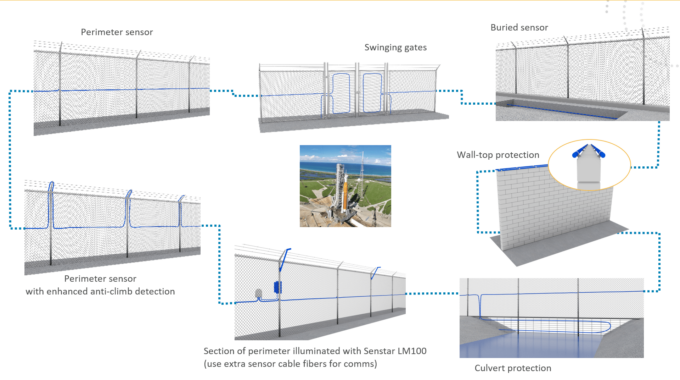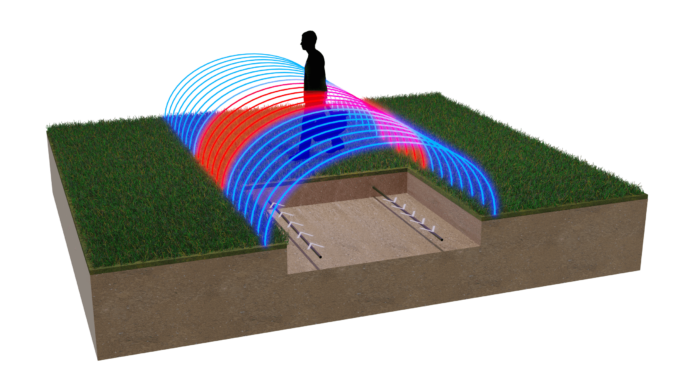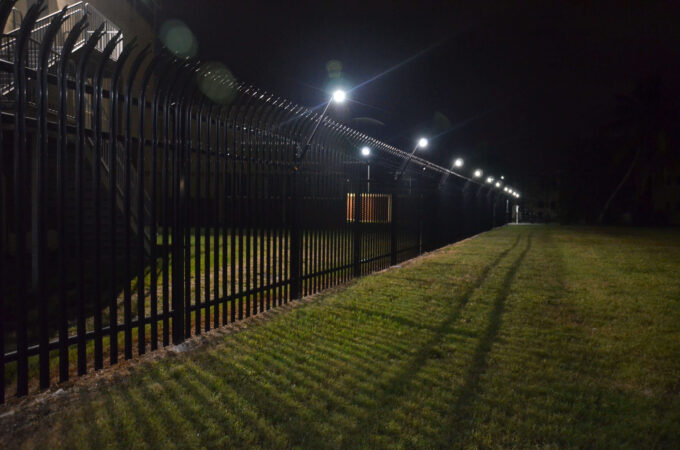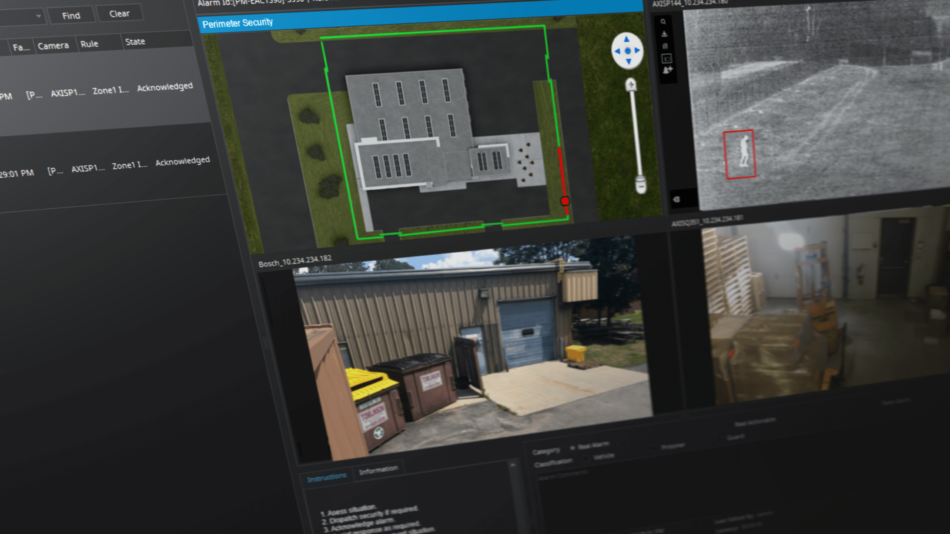Securing Space Launch and Military Facilities

The physical security of space launch and military installations is critical for both national defense and public safety. A deliberate attack on a facility could have profound geopolitical implications. Even less serious security breaches, such as political protest, vandalism, theft or simple trespassing, can result in serious disruption to operations and loss of life.
Space launch and military facilities can cover very large areas and their sensitive nature necessitates high levels of security. Security therefore takes on a multi-layered approach – restricted buffer zones, covert sensors, high security perimeter fencing, long-range surveillance cameras, tightly managed access control, and armed on-site personnel. Key to maintaining security in the event of a security incident or crisis is the need to integrate the security resources into a centralized security operations center (SOC).
A notable side benefit of creating restricted buffer zones around one or more sides of a facility is the conservation of natural habitats from development, such as wetlands, forests, or other environmentally sensitive areas. Security solutions need to take this into account and provide early warning detection without negatively impacting the environment.
The perimeters of large facilities (including internal perimeters) are usually protected by a range of different fence types, walls, and barriers. SOCs need sensors that can quickly and reliably detect and locate perimeter intrusions, avoid nuisance alarms, and integrate the information alongside live video for use in deploying an effective, rapid response.
Protecting Large, Non-uniform Perimeters
For space launch and military facilities, fiber optic perimeter intrusion detection sensors like FiberPatrol are an ideal solution:
- Extended coverage distance (10s of kilometers per device) with precision intrusion location capabilities
- Intrinsically safe in explosive atmospheres
- Non-conducting sensor with no active in-field components (immune to EMI and lightning, and no possibility of interference with radar and/or radio communications systems
- Long service life (25+ years)
- Repurpose unused fibers for communications
- Cut immune detection (sensing continues even after a cable cut)
- Suitable for a range of installation options

Senstar’s FiberPatrol fiber optic perimeter intrusion detection sensor is ideal for protecting large perimeters. Suitable for a wide range of fence and buried applications, a single FiberPatrol processor can protect an entire facility.
Covert Security for Sensitive Areas
Space launch and military bases also have highly sensitive internal areas such as staging areas, aircraft parking, and hangars that lack physical barriers. To detect and respond to threats in these areas, covert buried sensors like OmniTrax are highly effective:
- Invisible detection field provides the lowest vulnerability to defeat
- Suitable for a wide range of perimeter lengths
- No above-ground obstacles for vehicles to hit
- Works across all weather and visibility conditions
- Can be installed in almost any terrain – natural soil, asphalt, concrete

Protecting Nearby Wildlife
Having perimeters adjacent to protected conservation areas poses challenges with respect to security lighting, a key component of deterrence, assessment, and response. However, security and environmental responsibility need not be mutually exclusive with systems like the Senstar LM100, a 2-in-1 solution that combines illumination with perimeter intrusion detection. International Dark Sky Association (IDA) approved, its dimmable, targeted illumination and warm-light options minimize light pollution while ensuring the perimeter remains protected against intrusions.

Nuisance Alarms Undermine Security
Nuisance or false alarms can be caused by a variety of factors, such as extreme environmental conditions, wildlife, or even human error (e.g., accidentally triggering during in-field maintenance). The problem with perimeter nuisance alarms is that they can be a major distraction for security personnel at the SOC, leading to a situation where they become desensitized to genuine alarms. This can lead to critical security events being missed or overlooked, resulting in breaches or other security incidents. Furthermore, responding to false alarms can be costly and time-consuming, requiring security personnel to investigate and verify each alert to ensure that it is not a genuine threat.
To defeat nuisance alarms once and for all, Senstar has developed its new Sensor Fusion Engine, an AI-based solution that increases overall site security by providing additional detection and nuisance alarm rejection capabilities for high-risk areas or problematic sections of the perimeter. More than just a simple Boolean logic integration, the sensor fusion engine accesses low level data to intelligently characterize potential risks. Data synthesis enables the system to achieve levels of performance that exceed those of the individual sensors.
For More Information
For information on how Senstar can help protect your facility, contact your local Senstar representative.


